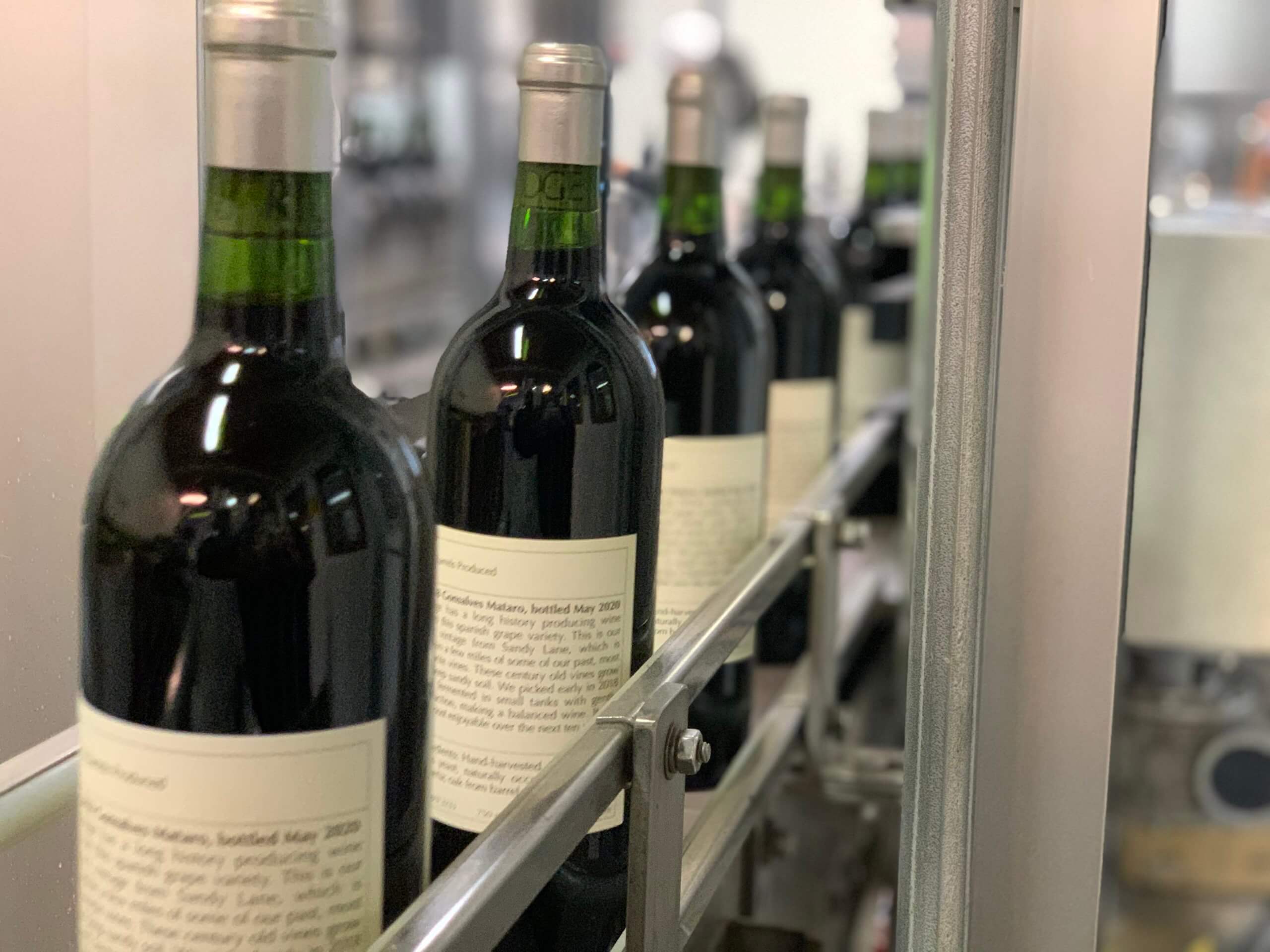“Ingredient Labeling: A Look Back” by Paul Draper
Blog Post
June 2021
Ridge Chairman and longtime winemaker Paul Draper looks back on sixty years of producing wine in the pre-industrial style and talks about why transparency and minimal intervention have always been at the heart of Ridge winemaking.
Transparency in Wine Ingredient Labeling Begins
“Ridge was one of the first California wineries to list every ingredient used in making a wine on all its labels. This year we celebrate sixty years of limiting our wines to what we refer to as pre-industrial ingredients. Fifty years ago after making my first four vintages of Monte Bello (‘69, ’70, ’71, ’72) and tasting again the superb ’62 and ’64 made by the founding partners, I thought we should do something to show how few ingredients are needed to make truly fine wine. I asked the federal authority that approves wine labels if we could voluntarily include a list of ingredients. They answered rather abruptly, “You cannot do it because it is not required, no one else does it and it would be confusing to consumers.” Then in 2008, a neighbor in the Santa Cruz Mountains put out, with federal approval, several wines with a number of ingredients listed on the labels. I proposed that we should do the same, especially because today there are many more chemical additives available that are often used in making wine and our customers should be aware of that. There was some initial concern as to how it would be accepted or even understood, but we decided to go ahead. We wrote up detailed explanations of what each of our few ingredients was and why they were used. This explanation is available on our website. With the vintage of 2011, we began to list them on our labels and the response was overwhelmingly positive.

Labeling Requirements: The Wine Industry Loophole
“When all foods in the U.S. were required to list ingredients on their labels, the alcohol beverage producers led by the wine industry lobbied hard and effectively to be excluded from the requirement. The wine industry is legally defined as a food industry and as such, for example, during COVID, has been permitted to continue their agricultural and wine production work. While wishing to be transparent in our wine making, what I consider most important is again what we tried fifty years ago to demonstrate, how few ingredients and what basic processing (gentle destemming and crushing, gentle pumping, and gentle pressing) are needed to make fine wine.
Carrying Natural Processes from the Vineyard into the Winery
“As more of our estate vineyards were certified organic and we could put “organically grown” on the label, we began to ask ourselves, does “Organic” mean anything at all for your health if chemical additives were used once the grapes reached the winery? There are something like sixty additives approved for use in wine in the U.S., Europe, and worldwide. In addition, there are a number of processing machines, some quite invasive, that are approved as well. The worst of the additives would be Velcorin, a carcinogen unless it is carefully diluted at the winery by a staff member wearing the equivalent of a hazmat suit. This chemical is used by a number of producers in the wine industry and the fruit juice industry to sterilize their products. A much less serious additive used by quite a few producers of wine in every price category, particularly in California, is Mega Purple. This is a very highly concentrated red wine juice from mediocre quality grapes that when added to a wine significantly increases its depth of color and fullness of body. Many additives have a legitimate place in the industry in improving the quality of wines from average or low quality grapes. They are used in many bag-in-the-box and lower priced wines. A number are used in wines of medium price and some even in wines of very high price.
Fine Wine vs High-Priced Wine – What’s the Difference?
“In this area of additives and processing, there is a distinction to be made between what could be defined as fine wine and what is simply high priced wine. Given the many thousands of wine producers worldwide, there are a small number of fine wine producers in Europe. There are far fewer in the rest of the world. To give two examples from France, one could use the Domaine of Romanée-Conti in Burgundy and a first growth chateau like Chateau Margaux in Bordeaux. Either one would only use the most basic of additives and no invasive processing. A good example of this invasive processing would be that used in a good number of well known, high priced California wines to reduce excessive alcohol in wines made from intentionally over ripened grapes. This type of processing would not be used in making fine wine in Europe or anywhere else. When the U.S. finally requires ingredient labeling on wines it will show the additives used but unfortunately not the industrial processing. However, the definition of the difference between what is simply high priced wine and what is fine will remain unchanged.”
– Paul Draper, Chairman of the Board
Wait!
In order to qualify for user related discounts, you must log in before proceeding with checkout. Click the button below to log in and receive these benefits, or close the window to continue.
Log In